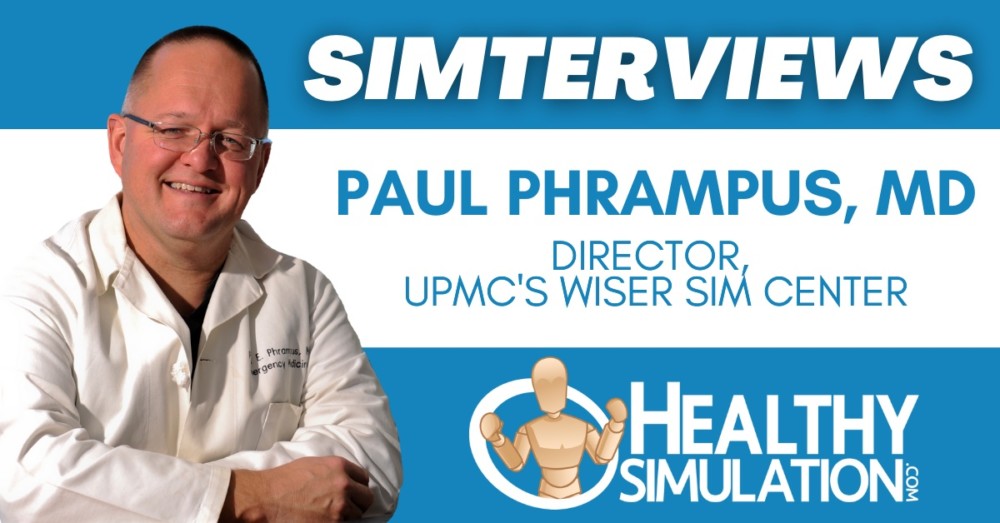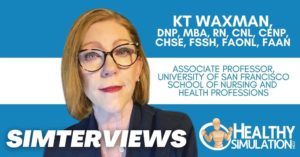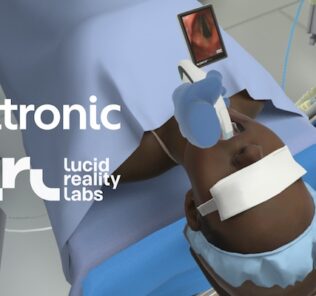*NEW* Simterviews: Healthcare Simulation Interviews | UPMC WISER Center Director, Dr. Paul Phrampus – Part 1
HealthySimulation.com’s new healthcare simulation expert interview series “Simterviews” kicks off its first conversation today with Dr. Paul Phrampus, MD, Director of the Peter M. Winter Institute for Simulation, Education and Research (WISER), and professor in the Departments of Emergency Medicine and Anesthesiology at the University Of Pittsburgh School Of Medicine. In addition, he serves as the Medical Director for Patient Safety of the UPMC Health System and is a Past President for the Society for Simulation in Healthcare (SSH). In the 2-part launch of this new ongoing Simterview series, HealthySimulation.com’s Content Director Lindsey Nolen receives powerful advice from Dr. Phrampus on advancing clinical simulation, responding to COVID-19 restrictions, Maximizing ROI with data tracking and connecting Patient Safety to Simulation outcomes.
HealthySim: For those new to clinical simulation, please tell us a little bit about yourself. What is your role with the company/institution? What are your professional goals?
Dr. Paul Phrampus: Ever since high school I was a technical geek. Then I spent seven years as an Electronics Technician in the Navy, where I volunteered as a paramedic. I was teaching electronics in the Navy, tutoring people on tasks, which blossomed into me teaching EMT and Paramedics programs at a community college. When I decided to pursue a career in medicine, my natural inclination was to go to emergency medicine from my experiences as a paramedic.
Sponsored Content:
When I came to Pittsburgh in 1997 to start my residency, there was a very active healthcare simulation program at the University of Pittsburgh. My department chairman knew of my background and interests and connected me with the person running the medical simulation program. Now, I am a practicing Physician that has been working in the clinical simulation field for the past 23 years. I’m the Director of the Winter Institute for Simulation, Education, and Research (or WISER) at the University of Pittsburgh and the UPMC Health System. I also have another role at the health system as the Medical Director of patient safety.
HealthySim: What do you see as the biggest challenges we are currently facing across the healthcare simulation industry as a whole?
Dr. Paul Phrampus: The assessment for the return on investment in healthcare simulation. We all know it’s powerful. We all know it’s irreplaceable. We all know it’s this amazing, powerful education force. There’s been educational literature that supports healthcare simulation for a long time. Calculating the ROI in today’s world, there are so many entities that rely on finance people making the final word or making the final word on investments. I think that it’s hard for them to do their job completely without an analysis that’s on a spreadsheet and that type of return on investment.
The second thing that’s the big challenge is that there are two principal categories of users. It’s important when we talk about these challenges to think about it like this. One group of users are what I call “the schools.” That’s the universities, the schools of nursing, the schools of medicine, the schools of pharmacy and on throughout all the professions in healthcare. Their primary purpose in using these medical simulations is as an educational tool or as an assessment tool tied back to the education.
Sponsored Content:
The second broad category of users is the health system or the hospital side of the equation. They are using healthcare simulation very, very differently. Of course, it’s being used for some education, but it’s also being used for assessment and for competency to investigate for systems issues and identification of latent threats to patient safety and many other things. When you think about healthcare simulation, most people think about it as an educational tool, and that’s great.
We want that. We’ve been working on that for 25 years. But I think much of the value calculation, particularly on the hospital and health systems side, comes from a return on investment that is calculated by understanding how healthcare simulation fits into the quality and safety efforts of the organization.
HealthySim: What needs to happen for clinical simulation to move to the next level of utilization?
Dr. Paul Phrampus: I think there are a number of possibilities. What I alluded to in terms of the ROI calculation is one thing. I think that some advocacy work in terms of lawmakers and third-party payers — meaning insurance companies — and regulatory and accrediting bodies would help. Educating as to how we can use healthcare simulation as a more powerful force for creating higher quality and safer healthcare would help as well. They could turn up the heat a little regarding regulations, legislation, and / or general encouragement for hospitals and healthcare systems to increase their use of clinical simulation.
I think on the education side, or the school side, of the equation, a lot of that work is being done already out of a necessitated need. It’s harder and harder for schools to find clinical sites for learners to get clinical rotation. I think that’s been dramatically exacerbated by the COVID-19 situation. As a result, people are turning to healthcare simulation more. There’s been a lot of great work that’s fed into this.
The National League of Nursing, or NLN, sponsored a study that was showing that nursing schools could replace clinical time with medical simulation, and students perform just as well or better with that substitution. I think we need more work like that academically that helps feed into that value equation to show how medical simulation can really blossom. I think that it’s particularly timely with the COVID-19 situation as it’s really forming as a disruptive force to all of education.
HealthySim: What would be your greatest advice to people just starting out in healthcare simulation?
Dr. Paul Phrampus: Seek out as much education as you possibly can, embracing healthcare simulation as a holistic education solution. Don’t think of healthcare simulation as the end goal. Think of improving the quality and care of patients as the end goal. That’s true whether you’re on the hospital side or the school side. If you can think like that, it will help you understand a little more about healthcare simulation’s place in that big picture.
Another piece of advice is to recognize that there are many right ways to do healthcare simulation. So many times, you attend national meetings and read papers and you can come to think that the way they are telling you is the only way to do healthcare simulation. If you start down that pathway, it becomes a tunnel that is tough to dig out of in your professional career. Embracing lots of possibilities and different choices and understanding the principles and the framework of medical simulation is more important than figuring out an exact or right way to do things.
The third big piece of advice I would give people is to seek out a mentor in healthcare simulation. Ideally, it would even be a mentor at a different institution so that their spin is a little bit different. It should be someone with experience in medical simulation that has lived healthcare simulation, breathed healthcare simulation, made great mistakes in clinical simulation and had great successes in clinical simulation to help guide you so that you’re not hitting your head on the wall in the same places that your mentor did.
HealthySim: What is your greatest advice for those already engaged in medical simulation, who want to continue to maximize their outcomes and ROI moving forward?
Dr. Paul Phrampus: One would be to make sure you’re collecting data. Everybody thinks that the hardest thing to do is to launch the course or launch the medical simulation program, and it is a phenomenal amount of work. What happens is that people often think it’s too much work to then collect data on users and user satisfaction, or the impact and competency levels that you might be impacting with healthcare simulation. That data that you’re gathering along the way is going to be something that can contribute mightily to the eventual ROI calculations — whether we’re talking about primary users on the school side or primary users on the health system side.
One of the hardest things for us to do, myself included, is to go back and reflect on, “Why did we do this? Why did we design the clinical simulation like this? Is it still meeting our goals? How can we do it more efficiently? How could we perhaps increase the effectiveness? How is my healthcare simulation program solving somebody else’s problem?”
That’s a critical question that people in mid-career and leadership need to ask. They need to be solving the problems of the people who are funding them to operate. Make sure your objective goals, work and outcomes are aligned with the missions that support your program.
Subscribe Now for Part 2 & More Simterviews!
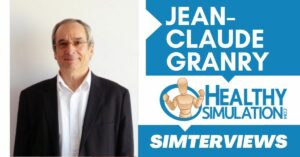
Simterview Avec le Professeur Jean Claude Granry, Pionnier Français de la Simulation en Santé
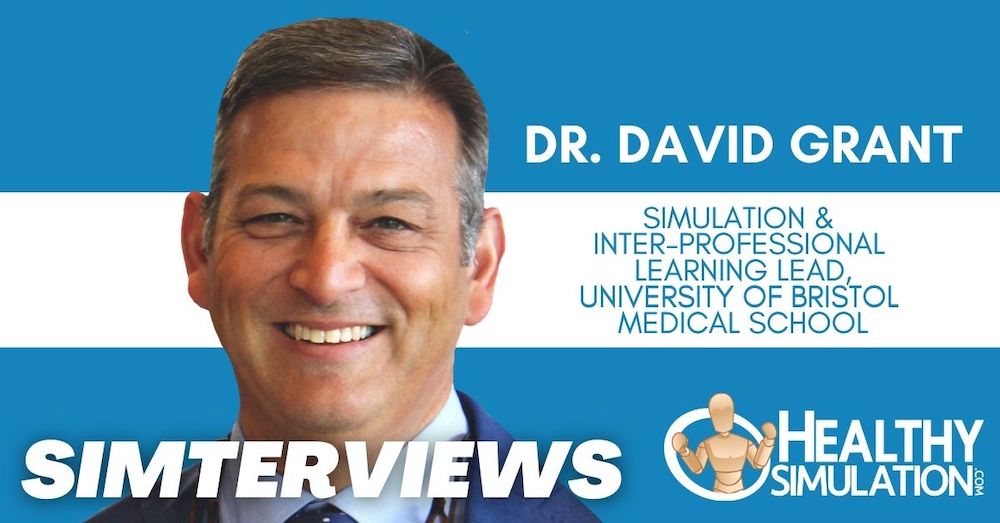
Simterviews: Dr. David Grant | Simulation Learning Lead, University of Bristol Medical School
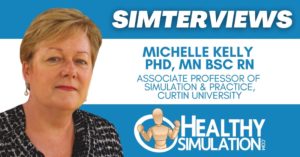
Simterviews: Dr. Michelle Kelly | Associate Professor of Simulation & Practice, Curtin University
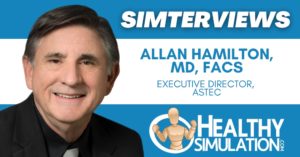
Simterviews: Dr. Allan Hamilton | Executive Director, ASTEC
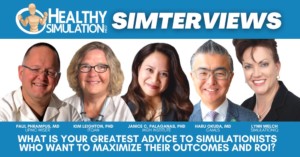
Simterviews: Medical Simulation Experts Discuss Ways to Maximize ROI
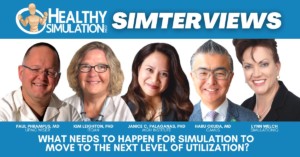
Simterviews: Medical Simulation Experts Discuss Next Level of Healthcare Simulation Utilization
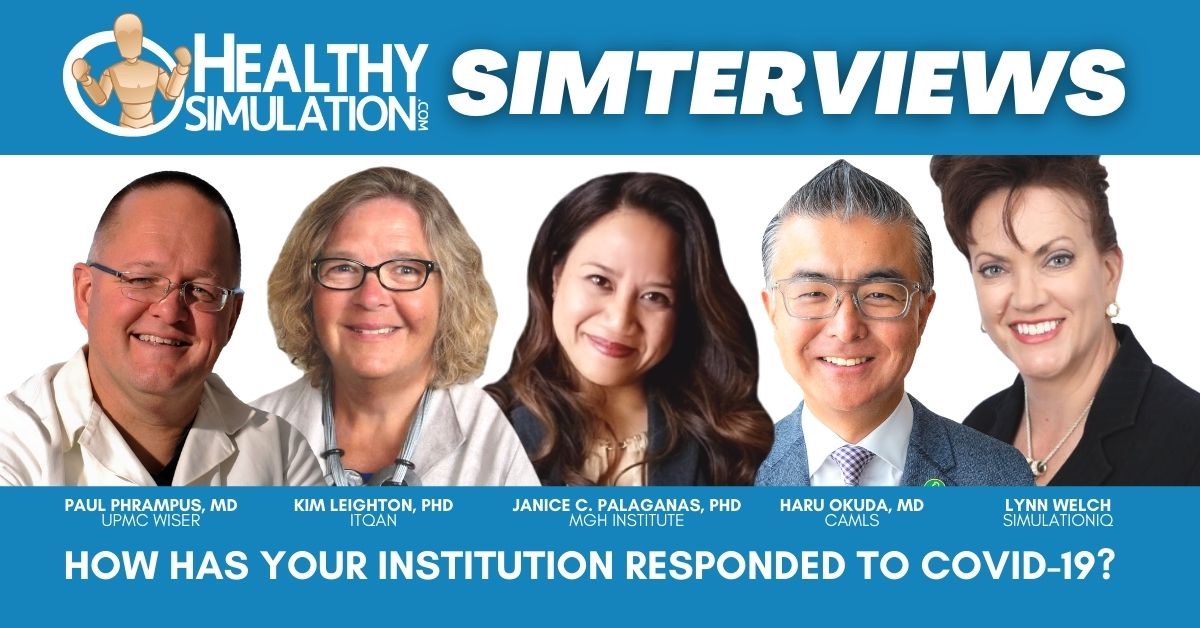
Simterviews: Medical Simulation Experts Discuss COVID-19 Responses
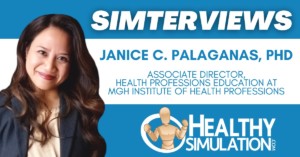
Simterviews: Dr. Janice Palaganas | Associate Director of PhD Program, MGH Institute
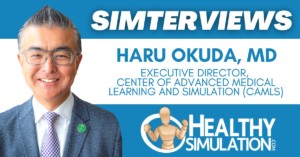
Simterviews: Dr. Haru Okuda | Executive Director, CAMLS
Lance Baily, BA, EMT-B, is the Founder & CEO of HealthySimulation.com, which he started while serving as the Director of the Nevada System of Higher Education’s Clinical Simulation Center of Las Vegas back in 2010. Lance is also the Founder and acting Advisor to the Board of SimGHOSTS.org, the world’s only non-profit organization dedicated to supporting professionals operating healthcare simulation technologies. His co-edited Book: “Comprehensive Healthcare Simulation: Operations, Technology, and Innovative Practice” is cited as a key source for professional certification in the industry. Lance’s background also includes serving as a Simulation Technology Specialist for the LA Community College District, EMS fire fighting, Hollywood movie production, rescue diving, and global travel. He and his wife Abigail Baily, PhD live in Las Vegas, Nevada with their two amazing daughters.
Sponsored Content:



